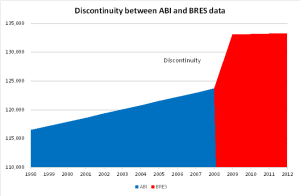
What’s wrong with our housing target?
The December 2014 version of the Strategic Housing Market Assessment (SHMA) for Hart District Council, and Surrey Heath and Rushmoor Borough Councils (together the Housing Market Area) can be found here.
The SHMA above calls for around 7,534 houses to be built in Hart District over the period from 2011-2031 and 23,600 over the whole area. Now Hart is starting to plan to take an additional 1,600 houses from Rushmoor, bringing the total up to 9,134 and potentially 1,400 from Surrey Heath. The SHMA is built on a process mandated by the Government, but at almost every stage the decisions taken err on the side of building more houses. More details are given in this post here, with a summary below:
- The starting point for the housing need is population projection. The Department of Communities and Local Government (DCLG) population projections would lead to an overall need for 790 houses per annum across the whole Housing Market Area, or 15,800 houses in total. This approach in itself essentially says that if you have carried out lots of development in the past (such as Elevetham Heath, Queen Elizabeth Barracks and St. Mary’s Park), you must continue to develop at that rate even though there has been net migration out of the area in recent years. Latest Government population projections are much lower.
- However, the report then states that the ONS usually understates these requirements so cherry picks inward migration data from the time we were building most housing, reverses the recent downward trend in average household size and then makes an arbitrary adjustment upwards to 925 houses per annum, leading to a need for 2,700 additional houses over the plan period and taking the total to 18,500.
- During the unsustainable economic boom from 1998 to 2008, the whole housing market area created jobs at around 720 per annum. Over the full economic cycle from 1998 to 2012 the whole area generated jobs at a rate of 529 per annum. The report assumes that up to 2031 the area will create jobs at more than double this, at a rate of 1,130 per annum. We have created jobs at a much lower rate over the period 2009-2013. These inflated jobs forecasts have the effect of increasing the number of houses required to 1,180 per annum, or a total of 23,600. Over the plan period this leads to a need for a further 5,100 extra houses being required. This flawed assumption also pushes up the amount of employment land we need, even though there are lots of empty office blocks in the district. This artificially reduces the amount of brownfield land available for housing.
The combination of these and other assumptions is that the combined area of Hart, Surrey Heath and Rushmoor needs to build an additional 7,800 houses over and above the government starting point which adds to the pressure on our green spaces and adds to congestion.
The impact on Hart is we have to build 7,534 houses (or 9,134 now that Hart is planning to take Rushmoor’s excess requirement). But Surrey Heath and Rushmoor have said that we need to build 3,000 houses that they say they can’t build in their own area. This pushes up our target to around 10,500 houses. If the questionable assumptions in the SHMA were taken away, our housing target would fall substantially to around 6,100 houses, and the threat from Surrey Heath and Rushmoor would go away. Our analysis is borne out by the report of independent expert Alan Wenban-Smith.